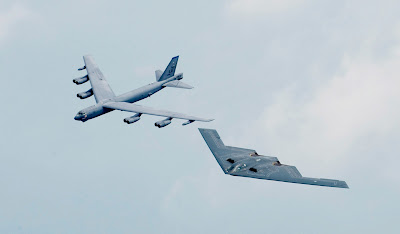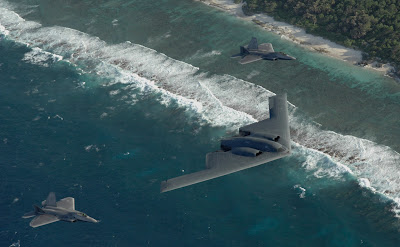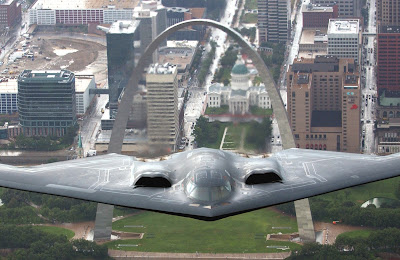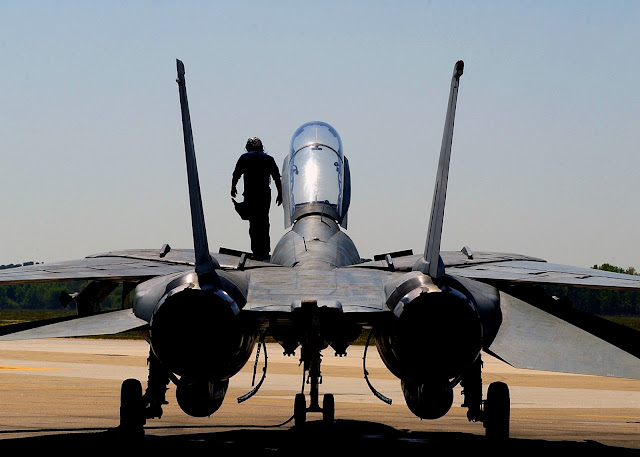Lockheed Martin’s F-35 Lightning II is a 5th-generation stealth fighter developed to safely penetrate areas without enemy radar seeing them -- an enhanced degree of “invisibility” that the 4th generation cannot achieve. Last Friday, the U.S. Marine Corps' VMFAT-501 training squadron in Florida’s Eglin AFB launched its first F-35B eight-ship, flew a mission, hot-pit refueled and went back up again.
This mission is the latest in a series of promising steps forward for the F-35.
Last month, the stealth fighter also had its landmark first short takeoff and vertical landing during a night mission. The test provided further data on the fighter’s special helmet and lighting in operations at night.
Since the program kicked off in the early 1990s, the F-35 development has been bombarded with criticism varying from targeting as the Pentagon’s most expensive equipment through to concerns voiced in a Pentagon Operational Test and Evaluation Office that the fighter could not fly near thunderstorms or risk the jet’s fuel tank exploding.
What is 5th-generation stealth?
The F-35's highly advanced stealth, called “Very Low Observable” or VLO stealth, is achieved through many advances that combine to dramatically reduce detection by enemy aircraft and defense systems.
- The 5th-generation has what is called a “lower radar cross-section.” Essentially, it means an F-35 pilot can be virtually invisible to enemy aircraft and gives the pilot the advantage of “seeing” the other aircraft first and taking action.
- The aircraft is fabricated from very advanced materials with a special coating to assist fighter that can move through enemy space essentially invisible to radar.
- The shape is designed without specific angles, for example, to reduce radar wave reflection. Innovations like reduced heat emissions and embedded antennas further enhance its stealth.
In addition to stealth and radar transparency, the F-35 is expected to be faster with a far greater range than previous aircraft with max mach at about 1.6. It has a top speed of 1,300 mph and a range of 1,450 miles.
Its advanced electronic warfare capabilities mean it can locate and track enemy forces, jam radio frequencies and disrupt attacks – key because it means an F-35 can reach highly defended targets while suppressing enemy radar detection.
In addition to electronic warfare and air to air or to ground attack, the F-35 could be used for invisible surveillance and reconnaissance and share the information with forces at sea and on the ground.
The pilots’ helmets are also designed to be state of the art giving the pilots an almost virtual reality. They are laser-scanned to fit precisely to each pilot’s head and while it displays all the data inside the visor that the pilot needs, it also allows them to see 360 degrees.
Inside the cockpit, there are other advanced capabilities like speech recognition – so that a pilot can talk to an F-35 and it talks back. It also has a glass screen digital instrument panel that the pilot can touch to pull up data – sort of like operating a smart phone.
Three types of Lightning II Force
The Department of Defense's Joint Strike Fighter Program funded the F-35 program with the intention of creating an affordable next generation strike aircraft weapon systems for the Navy, Air Force and Marines. It is hoped the 5th generation stealth fighter will replace several frontline aircraft.
Currently, there are three variations of the stealthy agile F-35 that could be used to defend the homeland and dominate enemy skies.
All three are supersonic, use Very Low Observable stealth and cover the spectrum of take-off needs including challenging take-off scenarios like short paved runways and aircraft carriers through to remote rudimentary roads and forward operating bases.
The F-35A Conventional Takeoff and Landing (CTOL) version carries an internal cannon and is meant for conventional runways.
The F-35B variant, designed for use by the U.S. Marine Corps, as well as the United Kingdom and Italy, has short takeoff/vertical landing (SVTOL).
A very important capability, SVTOL allows it to undertake missions from small ships, ski-jump aircraft carriers or very rudimentary expeditionary airfields near front-line combat zones.
Very cool, the F-35B can land all by itself and hover at the touch of a button.
The third version, the larger winged F-35C carrier, is designed for ultra precise handling for final ship approach. For managing the stress of catapult launches and arrested recoveries, it has a more robust structure.
Northrop Grumman, BAE Systems and Pratt & Whitney also work with Lockheed Martin on the project.
Truly a national undertaking, forty-six states and Puerto Rico involved in the F-35 program with Texas, Georgia, California, Arizona and Florida in particular supporting essential testing.

































